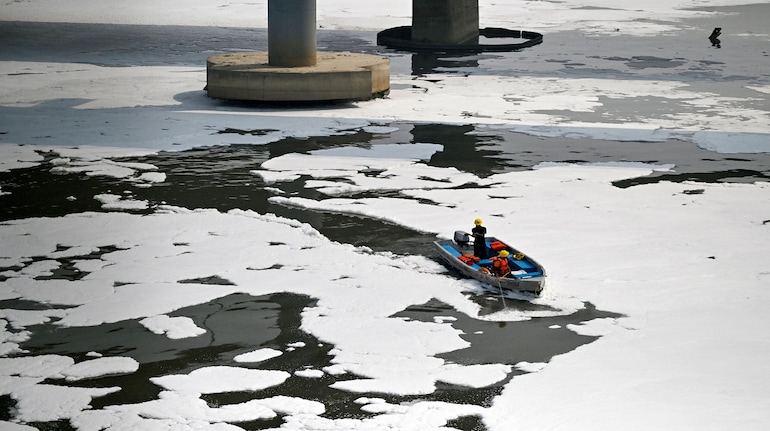



The National Capital Territory of Delhi, despite having one of the largest planned expenditure for any Indian city, at Rs 76,000 crore, spends very less on water supply and sewage compared to other major metros, a Moneycontrol analysis has shown.
The Delhi Jal Board is expected to spend just 12% of its annual budget on water supply and sanitation, whereas Mumbai will be spending 27% of its budget in the coming fiscal, showed a comparison. Despite having a smaller budget than Delhi, India's financial capital is expected to outspend the National Capital Region's allocation to water supply and sewage by nearly two times.
The MC analysis showed that Delhi's sanitation expenditure lags behind cities like Bengaluru and Chennai too. For instance, the Chennai Metropolitan Water Supply and Sewerage Board had provisioned to spend Rs 1,521 crore in FY24, or 19 percent of city’s total budget of Rs 7,868 crore.
Another comparison of expenditure as percentage of GDP shows how much Delhi lags behind, compared to other major metros. While Delhi and Chennai spend nearly the same amount, which is 0.8% as part of their GDP on water supply and sewage, Mumbai spends double that of Delhi at 1.6%.
Why Yamuna Cleaning is Not so Easy?The cleaning up of Yamuna river is expected to be an uphill task for the national capital’s new government.
An MC analysis shows that Delhi would need to find another Rs 13,000 crore to fund its welfare promises, such as cash guarantee to women. The state government spends Rs 11,000 crore annually on subsidies, which the BJP had promised to continue, in the run up to the elections.
Already, Delhi’s revenue surplus has been under pressure for the last two years. In FY25, the city state had projected a budget of Rs 3,000 crore, down from nearly Rs 15,000 crore two years ago.
More spending on Yamuna and other welfare schemes without additional source of fund or reallocation could risk sending the national capital's revenue into deficit.
How Much has Delhi Spent on Yamuna?An earlier analysis by Moneycontrol had found that the national capital has spent over Rs 7,000 crore on Yamuna river's cleaning since 2017, but Biochemical Oxygen Demand or BOD levels, which indicate water pollution, were higher in 2023 as compared to twenty years ago.
The BOD level was 16 times higher at Asgarpur, where the river exits the national capital, compared with Palla where it enters.
The faecel coliform levels, which indicate untreated sewage, were 1,959 times higher in September 2024 than the standard of 2,500. This reading was nearly 10,000 times more than the desired level of 500 units per 100 ml of water.
An NGT report submitted in January 2024 found that in Delhi, only nine of the 22 drains were tapped, and the rest discharging massive amounts of untreated sewage into the river.
Discover the latest Business News, Sensex, and Nifty updates. Obtain Personal Finance insights, tax queries, and expert opinions on Moneycontrol or download the Moneycontrol App to stay updated!
Find the best of Al News in one place, specially curated for you every weekend.
Stay on top of the latest tech trends and biggest startup news.